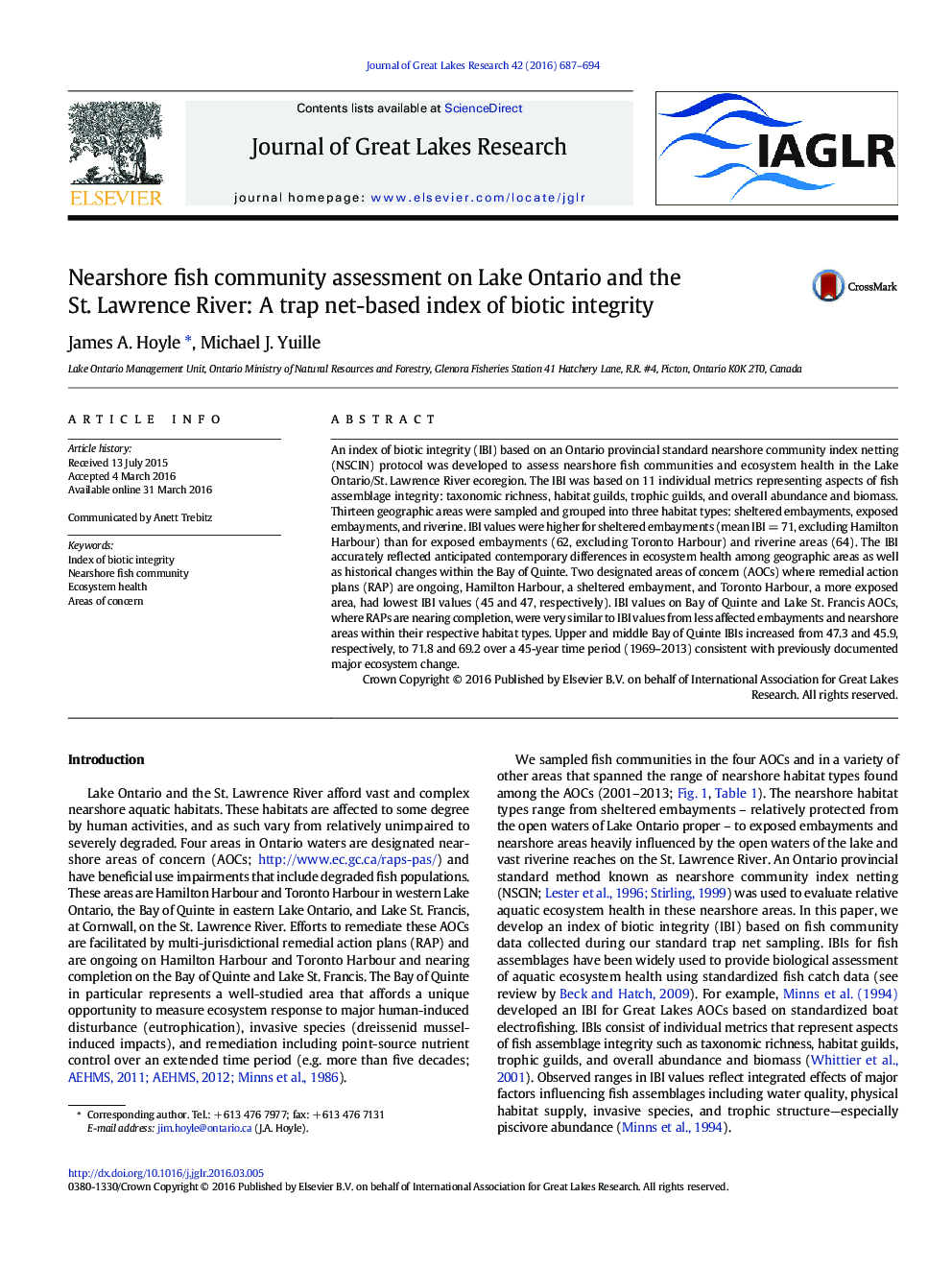| Article ID | Journal | Published Year | Pages | File Type |
|---|---|---|---|---|
| 6304689 | Journal of Great Lakes Research | 2016 | 8 Pages |
Abstract
An index of biotic integrity (IBI) based on an Ontario provincial standard nearshore community index netting (NSCIN) protocol was developed to assess nearshore fish communities and ecosystem health in the Lake Ontario/St. Lawrence River ecoregion. The IBI was based on 11 individual metrics representing aspects of fish assemblage integrity: taxonomic richness, habitat guilds, trophic guilds, and overall abundance and biomass. Thirteen geographic areas were sampled and grouped into three habitat types: sheltered embayments, exposed embayments, and riverine. IBI values were higher for sheltered embayments (mean IBIÂ =Â 71, excluding Hamilton Harbour) than for exposed embayments (62, excluding Toronto Harbour) and riverine areas (64). The IBI accurately reflected anticipated contemporary differences in ecosystem health among geographic areas as well as historical changes within the Bay of Quinte. Two designated areas of concern (AOCs) where remedial action plans (RAP) are ongoing, Hamilton Harbour, a sheltered embayment, and Toronto Harbour, a more exposed area, had lowest IBI values (45 and 47, respectively). IBI values on Bay of Quinte and Lake St. Francis AOCs, where RAPs are nearing completion, were very similar to IBI values from less affected embayments and nearshore areas within their respective habitat types. Upper and middle Bay of Quinte IBIs increased from 47.3 and 45.9, respectively, to 71.8 and 69.2 over a 45-year time period (1969-2013) consistent with previously documented major ecosystem change.
Related Topics
Physical Sciences and Engineering
Earth and Planetary Sciences
Earth and Planetary Sciences (General)
Authors
James A. Hoyle, Michael J. Yuille,
